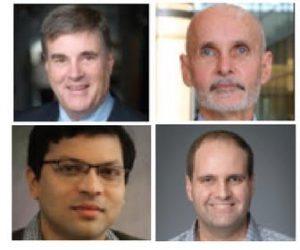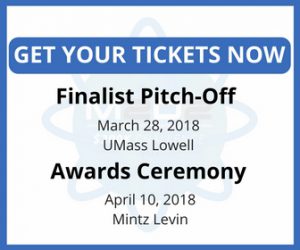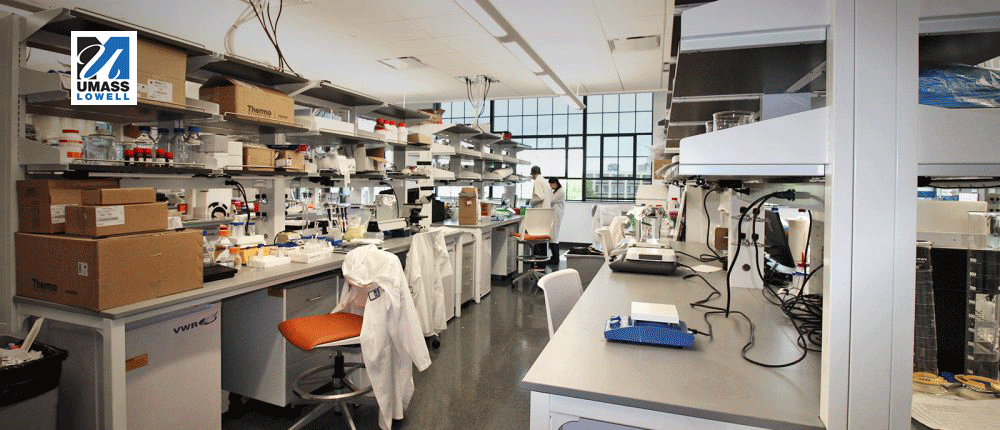
Clockwise from top left: Stephen Hourigan, CEO/Co-Founder; John Ward, President/Co-Founder; Matthew Ward, CSO/Co-Founder; Shreyas Sen, CTO/Co-Founder
Meet Drug Free Therapeutix, one of 20 medtech startups chosen as finalists in the 7th annual M2D2 $200K Challenge. Co-founder and CSO Matthew Ward took us inside the development of their innovation.
What is the innovation you’ve entered in the M2D2 $200K Challenge?
DFTx empowers next-generation bioelectronics for pain and other conditions through machine learning and human body communication technology.
What inspired you to develop your device?
You could say we’re guided by the classic Yogi Berra quote, “If you don’t know where you are going, you might wind up someplace else.” Neurostimulation devices like spinal cord stimulators have traditionally treated the electrical stimulus as a universal dosing element. The problem is that stimulus parameters are poor predictors of efficacy. For spinal cord stimulators to be effective, for example, they must be tuned to specific nerve pathways that channel pain messages to the brain. But, there are thousands of channels to choose from and it can take up to two years to manually find the right one. This is frustrating for the physician and patient, and costly to patients, providers and insurers.
We wanted to change that by providing an intelligent dosing system that uses nerve and other biological feedback signals to automatically tune the stimulus to engage the correct nerve pathways (i.e., channels of communication) for better therapy in less time. This led to the development of Extended Activation Control Technology (EXACT™), a universal dosing system that uses Subdermal Communication Technology—an interference-robust form of Human Body Communication (HBC) developed by DFTx co-founder Dr. Shreayas Sen—to gather physiological data that our machine learning algorithms use to continuously engage the correct nerve pathways.
What are the most significant barriers you’ve faced and overcome?
The most significant non-funding barrier was the cynicism around the ability of our technology to capture nerve recordings sufficient to power our algorithms. This is also one of the most important pieces to our intellectual property, since the market has struggled to effectively navigate the “noise and/or interference” challenges around measuring and interpreting nerve response signals. Furthermore, the market has not figured out how to effectively use modern computational tools to facilitate seamless, two-way communication with the nervous system. We believe that the device must fit the patient, not the other way around. We have powerful technology, experience, and know-how to bring such devices to market.
Can you share a “Eureka!” moment—a breakthrough in the development of your idea?
 The Eureka moment for our team was the realization that we could address one of the largest obstacles to machine learning in implantable medical devices: sufficient power capacity to generate and deliver biomarkers (nerve and organ response data) that will provide physicians and insurance companies the supporting evidence that SCS can be a primary treatment for pain and not a “last resort” therapy.
The Eureka moment for our team was the realization that we could address one of the largest obstacles to machine learning in implantable medical devices: sufficient power capacity to generate and deliver biomarkers (nerve and organ response data) that will provide physicians and insurance companies the supporting evidence that SCS can be a primary treatment for pain and not a “last resort” therapy.
Our mission was to deliver a patient- and physician-friendly device that can be trained by the patient using subjective input, while collecting critical treatment data to help us understand the mechanisms-of-action of these therapies and inform the design of more intelligent devices in the future. Our HBC technology allows us to do this in a battery-friendly way, using up to 100x less energy per bit than wireless communication technology in use today. It allows us to distribute noninvasive or minimally-invasive sensors to multiple locations in the body. And it enables us to run complex learning algorithms on external devices like a smart watch or phone.
If you win, what’s next?
If we win, we will take advantage of every valuable resource that M2D2 provides to accelerate the time-to-market and adoption of our intelligent neural control technology platform. These resources will help us to take a more aggressive position among new entrants and will enhance our ability to raise a Series A round of approximately $5M to complete the development of the world’s most intelligent, secure, and energy-efficient dosing platform for next-generation neurostimulators. Artificial intelligence is becoming more common in diagnostic applications, but there are only a few examples of artificially intelligent systems that control treatment delivery according to patient characteristics and need. We have the tools and expertise necessary to empower major medical device companies with new ways to address the unique needs of their end users, while providing unprecedented access to treatment data to inform the design of new product lines and expand the patient population who could benefit from their products.
- Challenge Pitch-Off—Wednesday March 28 at 5:00 pm, University Crossing, 220 Pawtucket St., Lowell
-
Finalist Awards & Networking Event—Tuesday April 10 at 5:00 pm, Mintz Levin, 1 Financial Center, Boston
For more information and tickets, visit https://www.eventbrite.com/e/m2d2-200k-challenge-finalist-pitch-off-awards-ceremony-tickets-43307428685
